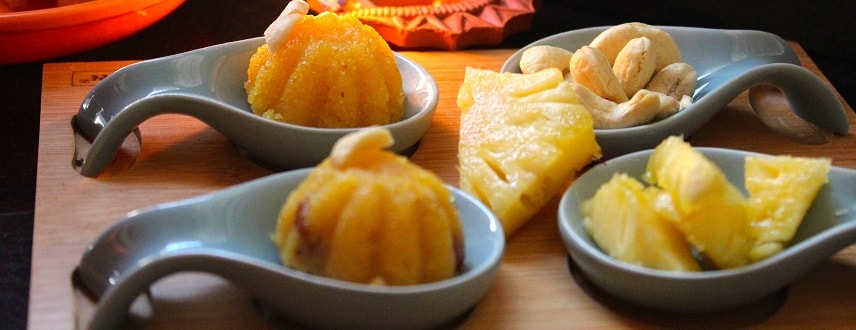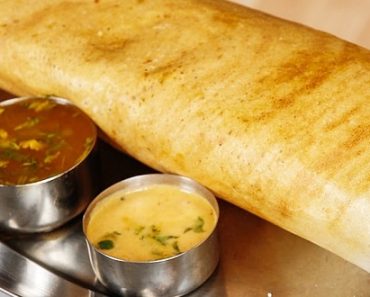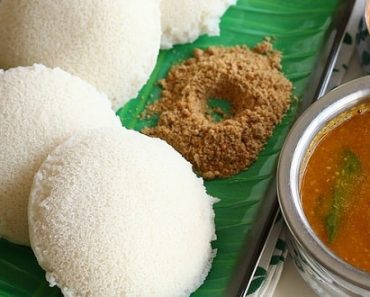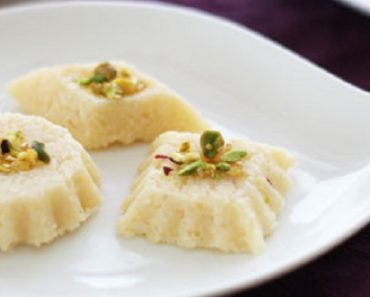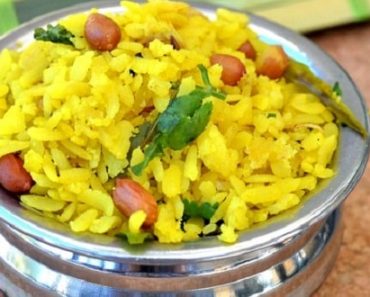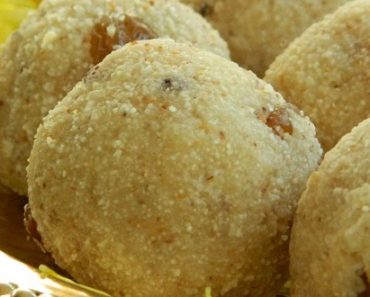The sweet dish Sheera is prepared made using semolina. It is popularly known as Sooji and with many different names across various regions. The Kesari recipes are made using Kesari (saffron) or an artificial orange color. The Rava Kesari is the Halwa having the Kesari texture.
Get Daily Dose of Delicious Recipes… Subscribe Now!
This variation of Kesari made using semolina and pineapple is popularly known as Pineapple Halwa. The regular Sheera or Halwa is made with milk but we have avoided that here. A little adjustment is done with the traditional Rava Kesari to make this tasty and delicious pineapple Kesari sweet dish. If you are die-heart Pineapple lover, you would relish each and every bite of this dish. The exceptional juiciness of pineapples is felt in this Pineapple Kesari.
The core tartness of pineapple is blended with the sweetness of the sugar. There is a perfect balance of the flavors in this sweet dish which is nor too tart and neither too sweet. This dish is called as Pineapple Halwa in north, Pineapple Kesari in south and Pineapple Pudding in the many regions.
The sweet smell of the pineapple Kesari is totally tempting and its taste is very addictive. It gets prepared with only a few ingredients. You will need roasted Rava, pineapple chunk, and sugar as the three main elements of this dish. It is very easy to make in minutes with fabulous flavors, fragrance, and taste. One single bite and you will be the fan of this mind-blowing Indian sweet dish.
Remarks:
- Do not stop stirring the rava and cashews or rava will turn dark brownish.
- If you see cream specks in the pineapple Kesari, then it means your rava is not cooked properly.
- You can skip using pineapple essence if you do not like using it.
- If you are not using essence, add pineapple juice and reduce water quantity.
- Refrain from adding milk in the pineapple and water mixture. It can react with pineapple and the taste would become bitter.
- If you have made the Pineapple Halwa in bulk, then you can store in it fridge up to 5 days. At room temperature, it stays edible for a day or two.
- If it becomes cold, then ghee would solid and the texture would become grainy. So always serve it warm and hot.
- You can also add pineapple puree to make this recipe. But in this case, reduce the quantity of water.
- If you want, you can dry roast Sooji before and keep it aside to cool for a while.
- Add pineapple to the mixture only after it is cooked, else it will be crunchy.
Garnish:
- You can give them any shape you wish. You may mould the pineapple Kesari in Square Shape, Muffins Shape or even cut it like triangle shape of various Burfi’s.
- Place a cashew over it and serve.
- You can also top the pineapple Kesari with raisins on it.
- If you have some pineapple remaining, you can serve them in the plate as well. Or you make sprinkle some chopped pineapple over the Kesari.
- You can also sprinkle finely chopped carnival almonds over it
Serving Idea:
Transfer the Pineapple Kesari (Pineapple Halwa) from the pan to the shallow serving plate. Serve it hot and you can have it plain. It tastes best when served warm directly from the pan. If you are refrigerated, then re-heat once before having it.
If you prefer to have some sweet in your breakfast, then go for this Pineapple Kesari which is easy and quick to make in morning. Serve it as sweet with your breakfast food. You can also serve this delicious and sweet Pineapple Halwa in form of dessert. For the small parties or gatherings, this is the perfect combination of sweet dessert dish to serve. Give some fancy shape and attractive look.
This Pineapple Halwa is served as a part of the meal along with the Saffron Rice (Kesari Bath). Both these Kesari (yellow color) delicacies are served together in a plate. You can also pair this sweet Pineapple Kesari with any Rice along with delicious chutney and other accompaniments of your choice.
Quick Tip:
- If you have canned or tinned pineapple slices then you can use that instead of fresh pineapple.
- Do not boil the pineapple slices in warm water if you are using pineapples tins.
- If in hurry, chop the pineapple in advance and store it in the refrigerator.
- If you add grated pineapple, then both the taste and texture of the dish will change.
- Adjust the ratio of sugar and rava if you prefer mild sweetness.
- The water will evaporate and will become less in quantity if you boil for a longer time. Adding more water will make your Kesari soft to eat.
How to know Pineapple Kesari is ready?
When you see small, short strings (similar to sugar syrup strings) forming, your Kesari is ready. You will see it appear while you stirring the mixture. As soon as you know it’s ready, switch off the flame.
How to give shape to Pineapple Kesari?
If you want to give some shape to your pineapple Halwa, then pour the hot mixture into the baking tray or in the moulds. After packing the mixture into a baking pan, press with spatula to even the layer. Let it warm and settle. Sprinkle or top the surface with the cashew nuts. Let it cool and then cut it into slices or unmould the mixture from tarts.
Various Ways to Make Pineapple Kesari Recipe:
There is more than one method to pineapple Kesari at home. All these few different ways have variation in taste, texture and time of making. The easiest method is to use fresh pineapple chunks. But if you want your Halwa to be more fruit flavored, you can also blend the chunks to a puree. The addition of color essence and pineapple extract is optional.
Variation in Kesari: You can use ripe banana sliced into small pieces instead of pineapple chunks. You can prepare the Kesari with any other fruit like apple, and mango or even with mixed fruits.
Reheat Pineapple Kesari: Take the mixture from the fridge. Transfer to a microwave safe bowl. Sprinkle some water and keep to warm for 1 minute in the microwave. The solidified ghee would begin to release from the pineapple Kesari. Take it out and serve it warm.
Ideal Festival to make Pineapple Kesari: This is a classic Diwali Sweet dish. You can also make for Basant Panchami (Spring Festival) as the Kesari (known as yellow) is the color of the spring season.

